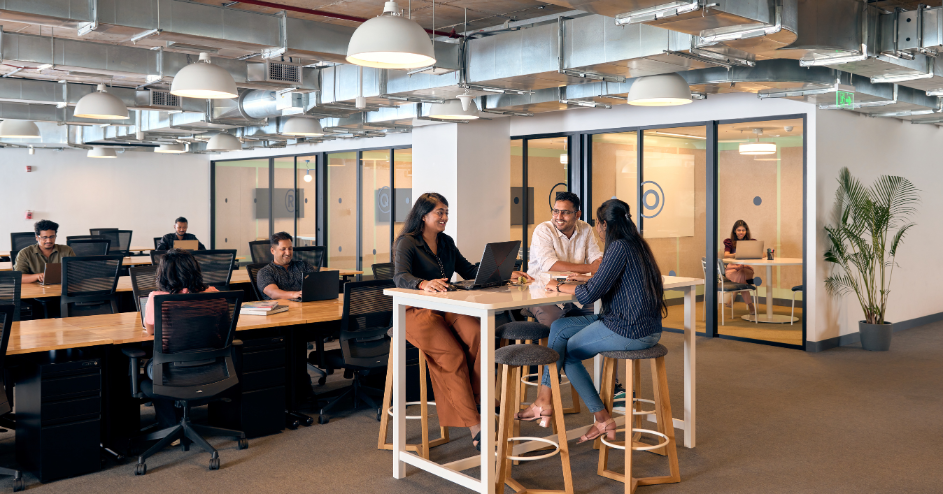WEWORK LABS
India’s Startup Shift: The Rise of Tier 2 and Tier 3 Cities

Tier 2 and 3 cities in India are becoming startup hotspots with lower costs, strong digital infrastructure, and untapped talent. Learn how the ecosystem is shifting beyond metros.
Introduction
Historically, India’s startup growth story has been tightly linked to its metro hubs—Bengaluru, Delhi-NCR, and Mumbai—where access to capital, talent, and infrastructure created fertile ground for innovation. Tier 2 and 3 cities, in contrast, were often viewed as consumers rather than creators of tech and innovation, largely excluded from the venture capital spotlight.
That perception, however, is quickly changing.
In recent years, these smaller cities have started gaining traction as promising grounds for entrepreneurial activity. Today, Tier 2 and 3 cities are no longer on the sidelines—they’re becoming key players in India’s evolving startup landscape. This blog will breakdown their role in today’s startup ecosystem and how the playing fields are being levelled.
There’s no doubt that the Indian startup ecosystem has begun its way into the mature stage. While the dominant narrative about India’s nascent growth has been through the activities through its major startup hubs—Bengaluru, Delhi, and Mumbai—a greater level of activity is happening in the confines outside of these hubs.
In this blog, we’ll break down how ecosystems are being built from scratch in these areas.
Untapped Potential in Smaller Cities
Smaller cities in India are rich with opportunity. They boast a growing population of digitally literate youth, an expanding middle class with disposable income, and a hunger for local solutions to local problems. More than 45% or around 56,000 Department for Promotion of Industry and Internal Trade (DPIIT)-recognized startups are emerging out of tier-2 and tier-3 cities, according to a press release from Press Information Bureau. This signals that a lot of founders are looking to these towns for a few reasons. Setting up a business in these regions means you’re taking advantage of lower operational costs like more affordable land, lower utility costs and more, according to a report by Mint.
These regions have also exhibited a greater demand than those living in metro cities. For instance, rural consumption growth grew to twice of what urban consumption demands were and remained a key driver in 2024. Companies like Meesho for instance, have become large businesses today simply by servicing these underserved markets which have had a greater appetite for retail consumption.
Let’s look at a few more key studies in detail.
Case Studies
ZOHO
One of the most compelling examples of the shift beyond metro cities is Zoho. The SaaS giant made headlines when it relocated its R&D operations from Chennai to Tenkasi, a small town in Tamil Nadu—proving that world-class software can indeed be built anywhere.
This move wasn’t just symbolic; it was deeply strategic. By decentralizing operations, Zoho reduced costs, accessed a dedicated and stable talent pool, and made a meaningful contribution to local economic development. Today, the company employs around 500 people in Tenkasi.
The impact goes beyond business. According to a company report, Zoho has played an active role in uplifting the region—supporting local schools, improving sanitation and healthcare, and even desilting the Nallamadan Puthukaulam pond. A survey conducted by Zoho revealed that 45% of respondents believed the company maintained a strong, positive connection with the local community.
Minimalist
Another success story comes from the D2C skincare brand Minimalist. By choosing to base their operations in Jaipur, the founders were able to forge closer relationships with local suppliers and streamline their supply chain—advantages that might have been harder to achieve in a metro. Following the company’s acquisition by Hindustan Unilever for ₹3,000 crore, co-founder Mohit Yadav reaffirmed their commitment to staying in Jaipur.
By setting up base in Jaipur, Minimalist was able to crack the fundamental vitals of their business right at a fraction of the cost of startups that are set up in metro cities.
In an interview with Inc42, Mohit shared that the company never struggled to find the talent it needed locally—and for the few roles requiring relocation, candidates were more than willing to make the move to a smaller city.
These examples highlight a growing reality: building outside the metros is not just possible—it can be a strategic edge. (Side note: If you like what we’re reading so far, on a side note, we are releasing a report that covers these types of topics in detail. Click here to sign up for it.)
Digital Infrastructure: A Game Changer
The digital divide in India is narrowing fast. With the rollout of high-speed internet, affordable smartphones, and platforms like UPI making digital transactions ubiquitous, even the most remote regions are now online and connected.
Government initiatives like the government-led telecommunications project BharatNet and the government-led digital campaign Digital India have played a pivotal role in laying the groundwork for this transformation. For startups, this means they can now reach customers, onboard vendors, and scale operations in places that were once considered out of reach. Whether it’s an edtech platform teaching in local dialects or a logistics startup optimizing rural deliveries, digital infrastructure is leveling the playing field.
(BharatNet programme is a government-led telecommunication project aimed at providing non-discriminatory access to broadband connectivity to all the telecom service providers. Digital India is the government’s flagship initiative aimed at transforming the country into a digitally empowered society and knowledge-driven economy.)
Cost Advantage: Low Burn, High Focus
One of the biggest advantages of operating out of a Tier 2 or Tier 3 city is the significantly lower cost of living and operating. Office space, salaries, and general overheads are far more affordable—giving startups a longer runway and reducing the pressure to chase funding too early.
But there’s also a cultural advantage: teams in smaller cities often display higher retention, greater loyalty, and a stronger sense of purpose. Without the distractions and churn common in big cities, startups here tend to stay more focused on solving real problems.
Challenges and Roadblocks
Despite the promise, building a startup in smaller cities isn’t without its hurdles. Access to early-stage capital remains a major challenge, as most VCs and angel networks are still concentrated in metros.
There’s also the perception gap—many investors still prefer startups headquartered in urban tech clusters, associating them with greater credibility. Until this mindset shifts, founders from smaller towns often have to work twice as hard to prove their mettle.
What’s Needed to Accelerate the Ecosystem
To truly unlock the potential of smaller cities, India needs a multi-stakeholder push. Local governments can play a crucial role by setting up incubation centers, improving infrastructure, and offering incentives. Educational institutions should encourage entrepreneurship through programs, workshops, and mentorship.
Meanwhile, investors need to expand their lens—looking beyond geography and focusing on problem-solution fit. Hybrid models of incubation and remote mentoring can help bridge the gap between metro resources and small-town ambition.
Large companies and unicorns have a crucial role to play in shaping India’s next wave of startup hubs. By decentralizing operations, funding satellite centers, or even sharing their journeys, they can help normalize the idea that innovation isn’t limited to a few metro pin codes. Companies like Zoho and Minimalist have already shown what’s possible—building and scaling from non-metro locations without compromising on ambition or quality. Their success offers a clear roadmap for others: invest in local talent, stay rooted in customer needs, and build globally relevant solutions from anywhere in the country.
The WeWork Labs Take
India’s next wave of unicorns might just emerge from places we least expect—from a college dorm in Patna, a farm in Nashik, or a co-working space in Kochi. As infrastructure strengthens and talent becomes more democratized, Tier 2 and Tier 3 cities will no longer be viewed as peripheries—they’ll be seen as frontiers.
The opportunity is massive. All it needs is a shift in mindset—and the courage to build where no one’s looked before.
Related Blogs:

WEWORK LABS
With the Indian startup ecosystem gaining maturity, there are a number of things changing—startups are thinking more global in their ambitions, more companies are taking their companies to the market

WEWORK LABS
India may be home to unicorns and cutting-edge tech, but at its core, it's still a nation of farmers — with over 50% of the population dependent on agriculture.

